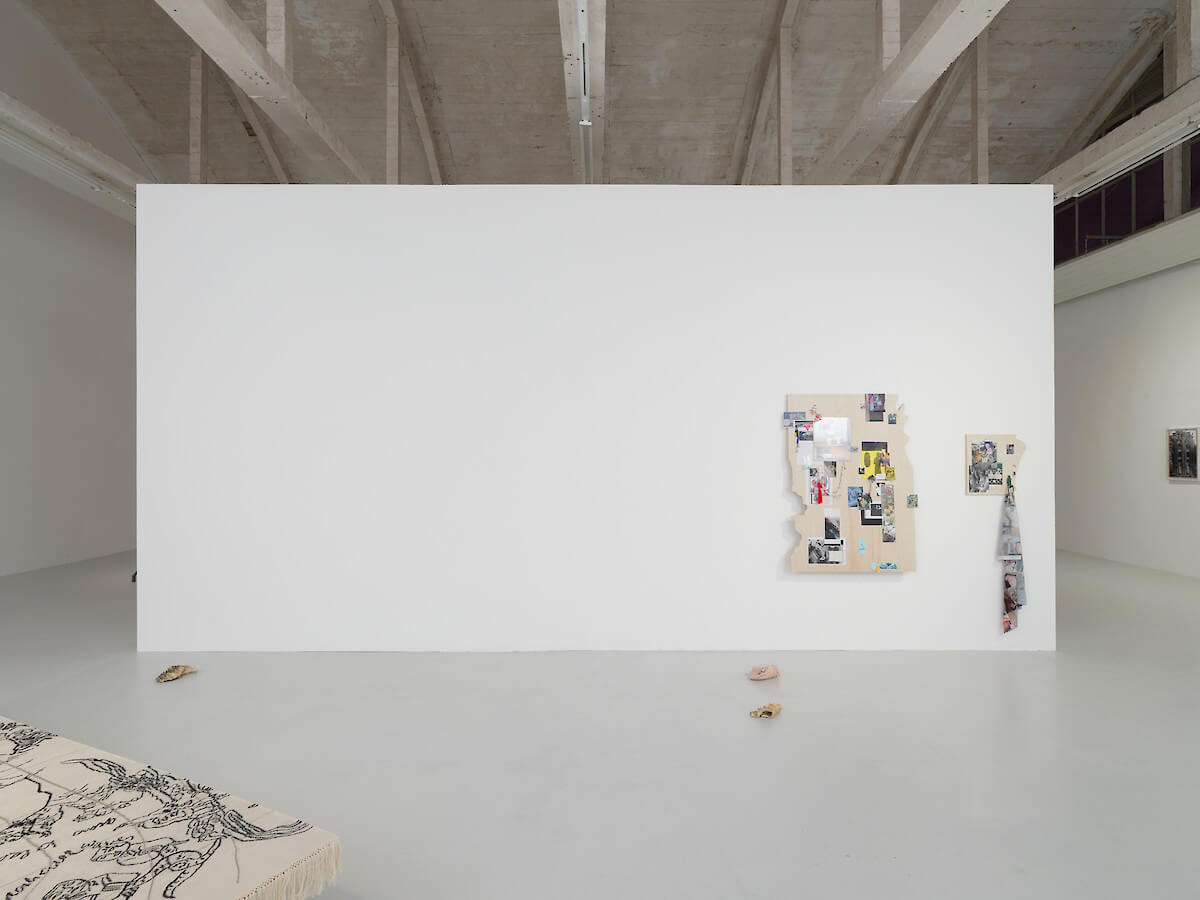
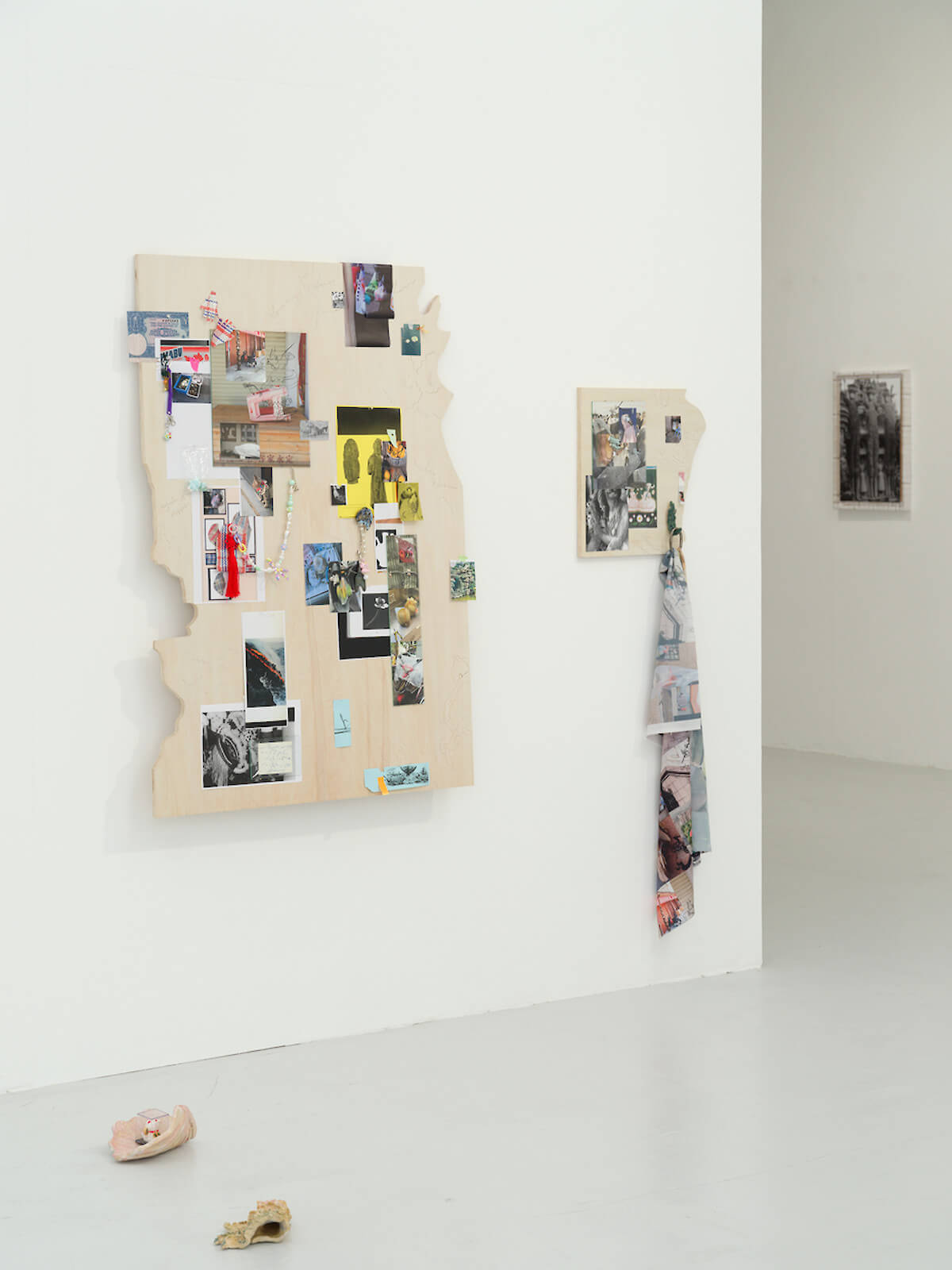
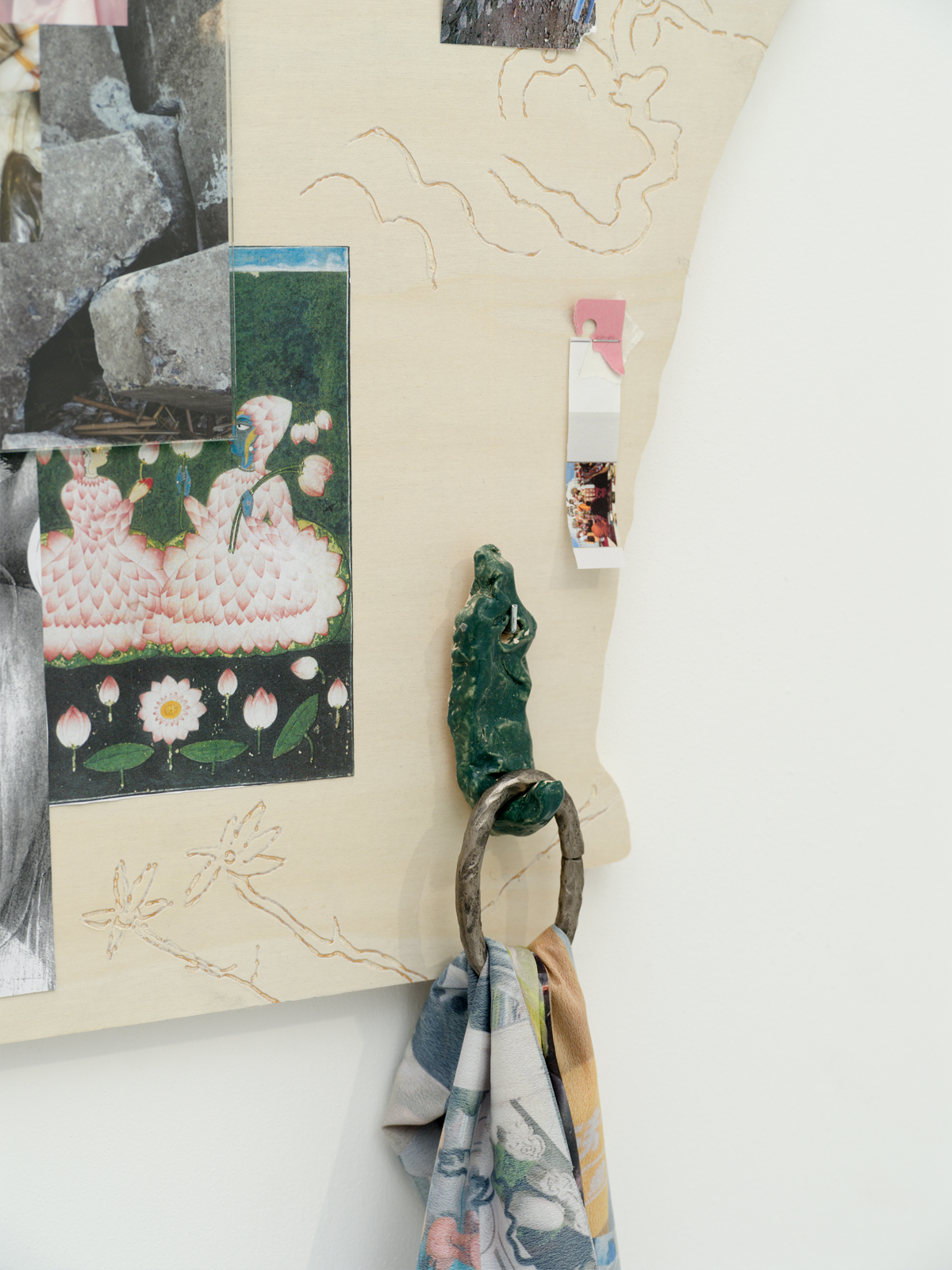
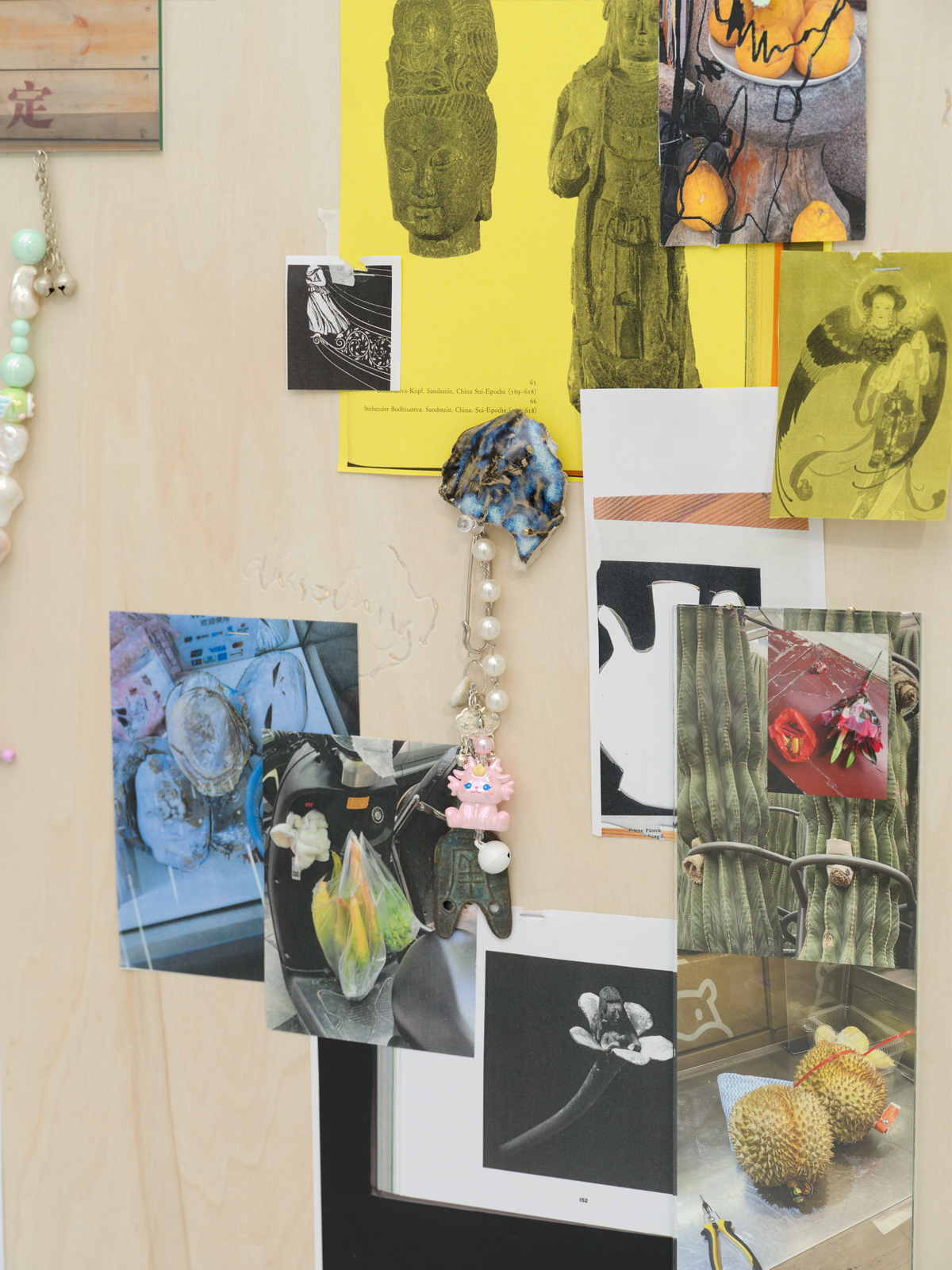
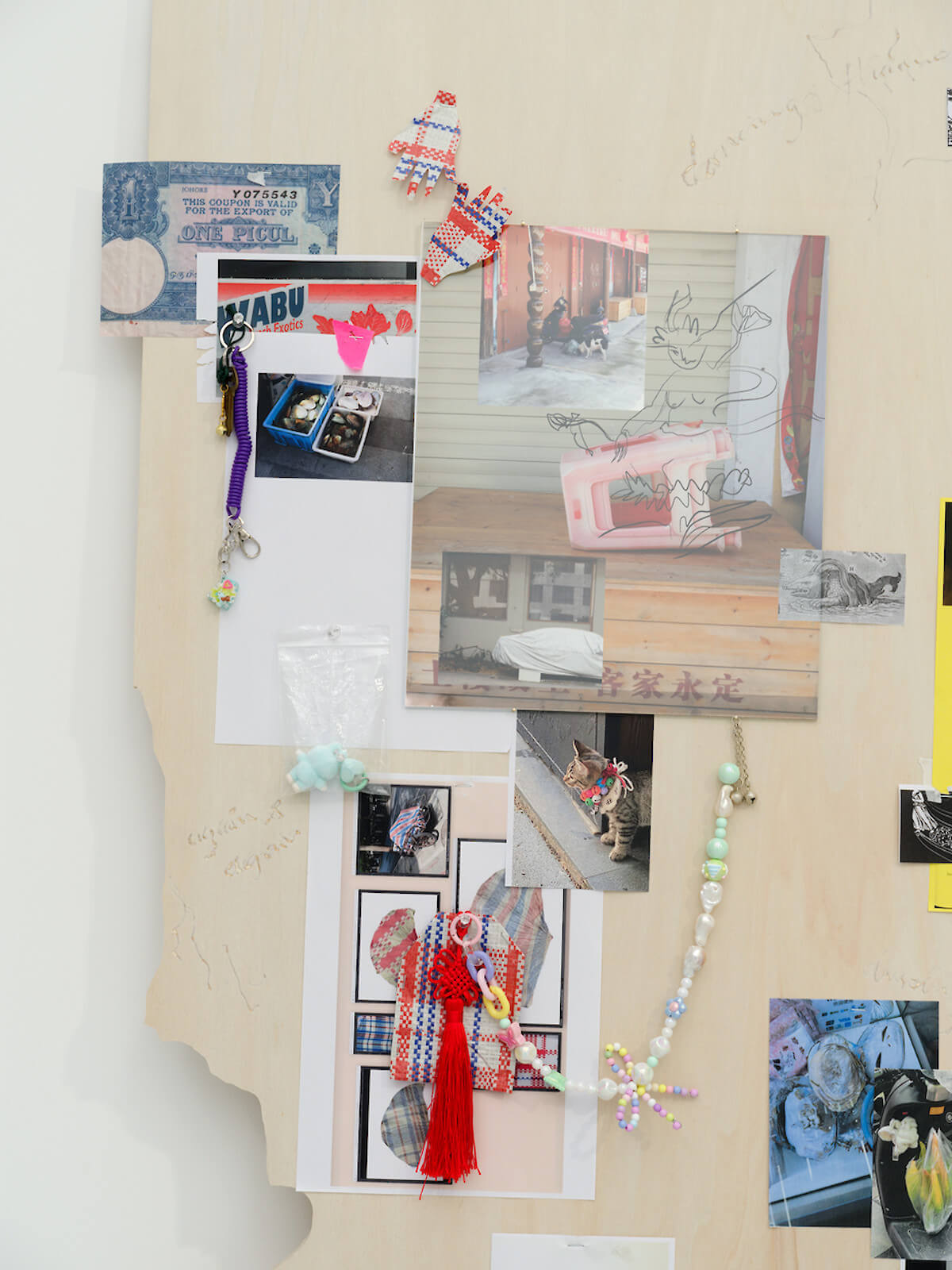

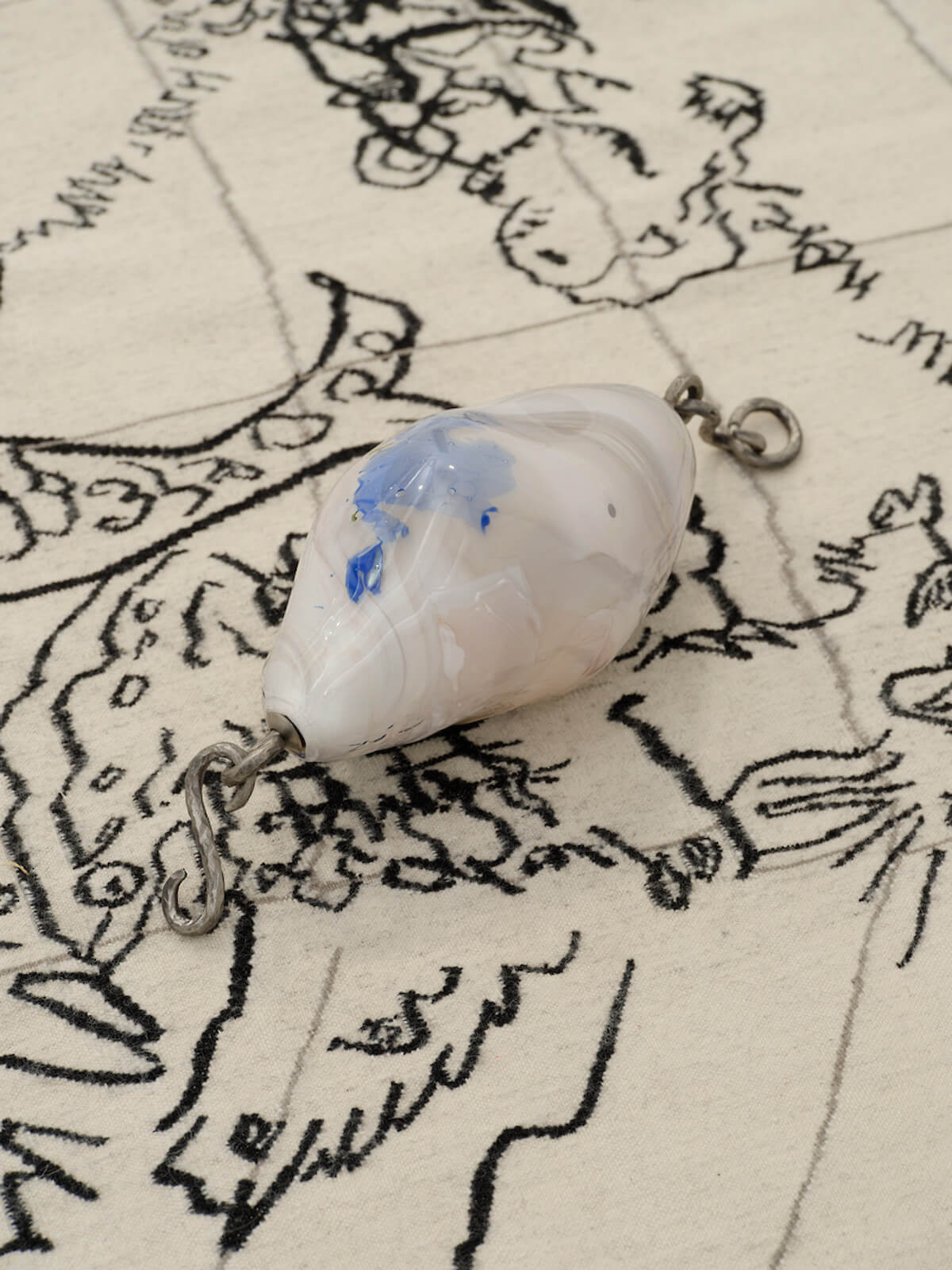
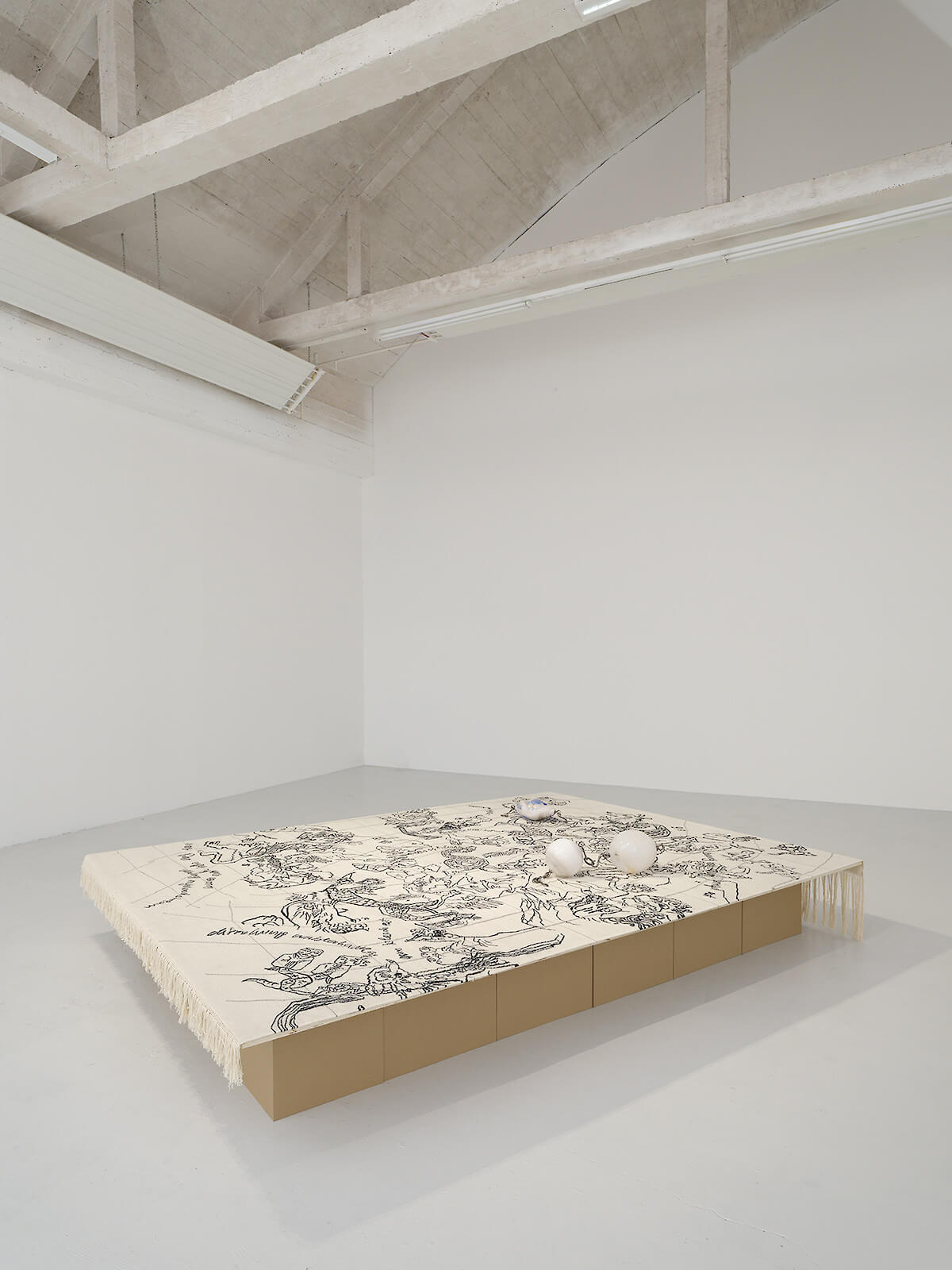

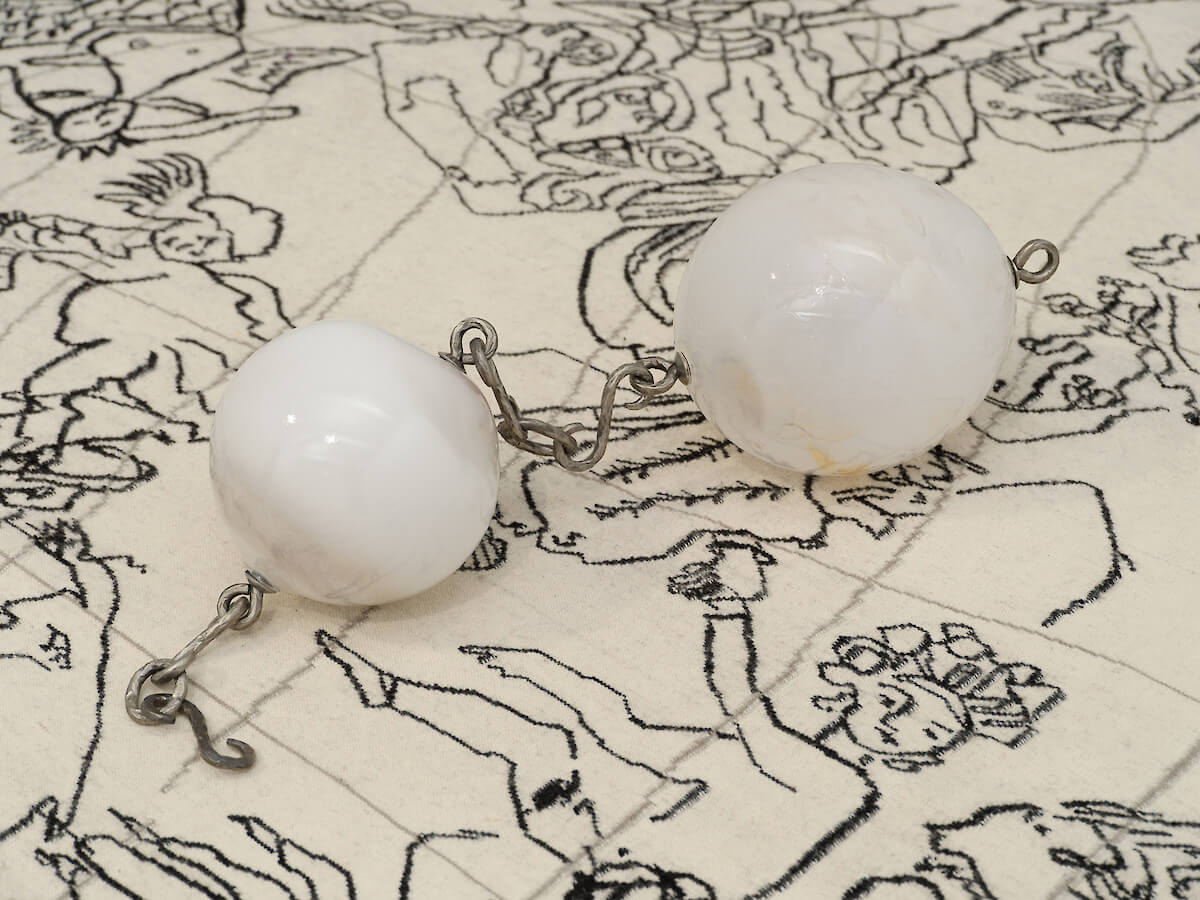
The Sea Around Us] 17 Oct 2025 — 3 Jan 2026, Centre d’art contemporain Passerelle
Hoël Duret, Marta Dyachenko, Lena Henke, Ben Saint Maxent, Wie-yi T. Lauw, Sophie T. Lvoff
Wie-Yi T. Lauw's practice situates itself between narratives, global and personal, and the direct surroundings where her works come to life. From a fluid process of immersion and transformation, her installations tell stories both near and far but always with a backbone rooted in decolonialism, migratory fluxes, power relations and shared mythology.
In her work Burning waves, a tapestry reproduces shared knowledge of myth and legends from across the seas, retracing routes of trade, and systemic abuse of people and resources.
Drawings of creatures embrace and cut off routes across what can slowly be understood as a map, or the survey of a territory shared by mankind, shrouded in layers of stories and history.
The thick softness of the textile is pinned down by glass pearls, connected by the loaded aspect, especially in the open seas, of metal chains. Those elements embodying the systems of oppression and trade work as stark reminders, beyond the poetical sea fog, of what harbours have also been built and used for.
Working between personal history, archival works and how those are woven into daily life, Wie-Yi started developing Index during her spring 2025 residency in Shanghai. Index is a work in progress, a bit like a board journal that was started almost a century ago, see the Jesuit archival photography from 1928. Those archives were given to the artist's father by the Jesuites themselves, as he migrated by boat from his native Indonesia to Europe. Stepping away from a grand interpersonal course, the installation works as a spring board for narratives to take their own course, meeting dead ends or continuing out of the artist's control.
By whom, for whom and against whom are crucial questions that Wie-Yi's work brings into the room with Burning waves and Index, from the East China Seas and the mainland, heading towards Brest, her work tells tales of mystery, migration, courage and absolutely, freedom.
Text by Tristan Deschamps
-
“An ocean must be a story pieced together from many sources and containing whole chapters the details of which we can only imagine,” wrote Rachel Carson in The Sea Around Us (1951), translated into French as Cette mer qui nous entoure. In her book, this American biologist combined science and poetry to describe the abundant life of the various levels of the ocean, from the icy darkness of the depths to the power of the tides and currents. She also reminded us that the ocean’s origin, two billion years ago, was not witnessed by any human being, yet is nevertheless the source of our own existence. To Carson, the sea is both a process far beyond the human scale and a place deeply entwined with our imagination.
The exhibition Cette Mer qui nous entoure [The Sea Around Us] is set in this divide, between invisibility and imagination, between the immensity of natural phenomena and the fragility of our human gaze. First shown at the Kunstverein Friedrichshafen, in Germany, in February 2025, with the title It must be a story pieced together from many sources, the project is embarking on a second chapter in Brest. Moving from the shores of Lake Constance to the Atlantic coast provides not simply a change of geographical location, but also a change of scale and resonance. Two port cities therefore become spokespersons, asking the question of what happens when works travel and are re-presented in a different context.
The exhibition explores dialogue and transformation: how do works evolve when they are placed in new environments? What do they become when they are designed as open processes, capable of growing, changing and reinventing themselves? Water is here both a subject and a method: a means of transportation and a provider of links, but also a source of instability, erosion and change.
In Brest, the exhibition expands and deepens. The artists who came together in Friedrichshafen continue their research and produce new versions of their works, sometimes specific to the site. Two artists based in Germany, Wie-yi T. Lauw and Lena Henke, join the project, which remains intentionally open and in flux. The offerings gathered in Passerelle form a whole that includes fictional tales, personal memory, collective stories and observations on the fragilities of our time.
For several years Hoël Duret has been inventing maritime tales coloured by science fiction and the absurd: imaginary voyages, jellyfish travelling through undersea cables or pseudo-documentaries on fictional flotillas. In Brest, he presents screen-sculptures in which jellyfish become symbols of globalised capitalism and of the ecological upheavals related to maritime transport.
Marta Dyachenko focusses on port infrastructure, slipways, seawalls and floating systems that range from construction to ruin. Her works Schiffbarmachung highlight their corrosion and emphasise our fragile dependence on unstable technical and social structures.
Lena Henke investigates the relationship between bodies, city planning and power. Her sculptures play with scale and matter, questioning how space is organised and controlled, especially from a female perspective.
Wie-yi T. Lauw is developing the use of personal and collective stories related to migration, colonial heritage and shared mythologies. Her textile and archival installations weave together letters, family stories and maritime tales from around the world, recalling that the sea is crossed by stories of domination as much as by stories of resistance.
Sophie T. Lvoff in Dream Code undertakes photographic research to create a visual language from signs and fragments, like a Morse code made up of partially hidden images and texts. Her photographs resemble messages in bottles, coded notes, personal stories and fleeting details tracing invisible routes between places and stories.
Lastly, Ben Saint-Maxent bases his practice on the transformation processes of the natural world. Here he enhances his research with personal recollections: the scent of pine resin, saw blades inherited from his family of craftspeople, or large demijohns containing endangered plants, collected at the National Botanical Conservatory of Brest. His installations reflect a conversation between personal memory, familiar objects and natural forces.
Just like the sea it is exploring, the exhibition is made up of various different strata and is in motion and resistant to any ending. The artists’ practices flow past each other and re-form like interacting currents. Cette Mer qui nous entoure [The Sea Around Us] evokes not only geographical proximity, but also the state of being immersed in relationships that we cannot fully map, in stories that always remain partial and fragmented. Between Lake Constance and the Atlantic, the exhibition swells like a constantly-expanding story, just like the sea itself, unfinished, ceaselessly starting again.
Exhibition curators: Tristan Deschamps, Marlene A. Schenk with Loïc Le Gall
In partnership with the Kunstverein Friedrichshafen
Brest © photo : Aurélien Mole
Supported by the PERSPEKTIVE Fund for Contemporary Art & Architecture of the Office for Visual Arts of the Institut français Germany, sponsored by the French Ministry of Culture, the Institut français Paris and the Goethe-Institut.